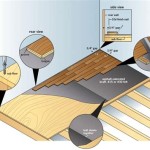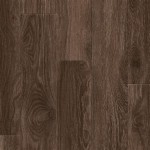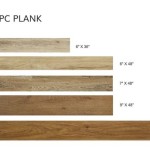How Much Is Porcelain Tile Flooring?
Porcelain tile flooring represents a popular choice for homeowners and contractors alike, lauded for its durability, water resistance, and aesthetic versatility. However, the cost associated with porcelain tile flooring can vary significantly depending on a multitude of factors. Understanding these factors is crucial for budgeting purposes and ensuring a successful flooring project.
The total cost of installing porcelain tile flooring encompasses more than just the price of the tiles themselves. It includes the cost of materials such as mortar, grout, underlayment (if needed), and sealants, as well as the cost of labor if professional installation is required. This article will delve into the various components that contribute to the overall expense, providing a comprehensive overview of what to expect when budgeting for porcelain tile flooring.
Key Factors Influencing Porcelain Tile Flooring Costs
The price of porcelain tile flooring is influenced by a complex interplay of factors, ranging from the quality and type of tile chosen to the complexity of the installation process. Understanding these key elements is essential for making informed decisions and accurately estimating the project's overall cost.
Tile Quality and Type: The quality and type of porcelain tile are primary determinants of its price. Porcelain tiles are generally categorized based on their PEI (Porcelain Enamel Institute) rating, which indicates their resistance to abrasion. Tiles with higher PEI ratings, suitable for high-traffic areas, tend to be more expensive. Furthermore, the design and aesthetic features of the tile significantly impact its cost. Simple, mass-produced tiles are typically more affordable than those with intricate patterns, textures, or custom designs. Large-format tiles, which require more precise manufacturing and handling, are often priced higher than smaller tiles. Additionally, rectified tiles, which have precisely squared edges, minimizing grout lines, also command a premium due to the extra manufacturing process.
Tile Size and Shape: The size and shape of the porcelain tiles also contribute to the final cost. Larger tiles require more material to produce and can be more challenging to install, potentially increasing both material and labor expenses. Similarly, unusual shapes, such as mosaics or hexagons, may involve more intricate cutting and installation, impacting the overall cost. While larger tiles can sometimes lead to lower labor costs due to covering more area quickly, the added material cost and potential for breakage during installation can offset these savings.
Material Costs Beyond Tiles: Beyond the tiles themselves, several other materials are necessary for a successful installation. Mortar, used to adhere the tiles to the subfloor, varies in price depending on its type and quality. Modified mortars, designed for specific types of tiles or substrates, are often more expensive than standard mortars. Grout, which fills the spaces between the tiles, also contributes to the overall cost. Epoxy grouts, known for their superior stain resistance and durability, are significantly more expensive than cement-based grouts. In some cases, an underlayment may be required to provide a stable and level surface for the tiles, further adding to the material costs. Finally, sealants are often applied to the grout lines to protect them from stains and moisture, representing an additional expense.
Labor Costs: Labor costs represent a significant portion of the overall expense, especially when professional installation is necessary. Labor rates vary widely depending on the region, the installer's experience, and the complexity of the project. Factors influencing labor costs include the size and layout of the area to be tiled, the type of tile being installed, and any necessary preparation work, such as removing old flooring or leveling the subfloor. Intricate patterns or mosaic installations will typically incur higher labor costs due to the increased time and skill required.
Detailed Breakdown of Cost Components
To provide a more concrete understanding of the costs involved, a detailed breakdown of the individual components is necessary. This section will explore the typical price ranges for various aspects of porcelain tile flooring projects.
Porcelain Tile Costs: Porcelain tile prices can range from $2 to $20 or more per square foot, depending on the factors described above. Basic, mass-produced tiles typically fall in the lower end of the range, while high-end, designer tiles can command much higher prices. Expect to pay more for textured or patterned tiles replicating natural stone or wood. Large-format tiles and rectified tiles often fall in the higher price ranges. The quality of the porcelain, as indicated by its PEI rating and water absorption rate, also impacts the price. Tiles with lower water absorption rates, suitable for wet environments like bathrooms and kitchens, are often more expensive.
Material Costs (Mortar, Grout, Underlayment, Sealant): The cost of mortar can range from $15 to $50 per bag, depending on the type and quality. Modified mortars, designed for specific tile types or substrates, will generally be more expensive. Grout prices vary from $15 to $100 or more per bag, with epoxy grouts being the most expensive option. The amount of grout needed will depend on the size of the tiles and the width of the grout lines. Underlayment, if required, can cost between $0.50 and $5 per square foot, depending on the type and thickness. Sealant costs typically range from $10 to $30 per bottle, with the amount needed depending on the size of the tiled area. These material costs can add a significant amount to the overall project's budget.
Labor Costs (Professional Installation): Professional installation costs can range from $4 to $15 or more per square foot, depending on the region, the installer's experience, and the complexity of the project. Simple, straightforward installations in large, open areas will typically be less expensive than intricate installations with complex patterns or in small, confined spaces. Preparation work, such as removing old flooring or leveling the subfloor, will add to the labor costs. It is crucial to obtain multiple quotes from qualified installers and carefully review their experience and references before making a decision. While attempting a DIY installation can save on labor costs, it requires significant skill and experience to achieve a professional-looking result. Errors during installation can be costly to correct and may even damage the tiles themselves.
Removal and Disposal of Old Flooring: The removal and disposal of existing flooring can also add to the overall cost. If you are replacing old flooring, you may need to factor in the cost of demolition and disposal. This can range from $1 to $5 per square foot, depending on the type of flooring being removed and the complexity of the removal process. Some installers include the cost of removal and disposal in their overall quote, while others charge a separate fee. It is essential to clarify whether removal and disposal are included in the quote to avoid any surprises.
Strategies for Managing Porcelain Tile Flooring Costs
While porcelain tile flooring can represent a significant investment, there are several strategies that homeowners can employ to manage costs effectively and stay within budget. This section will explore some practical tips for minimizing expenses without compromising on the quality or aesthetics of the finished project.
Comparison Shopping: One of the most effective ways to save money on porcelain tile flooring is to shop around and compare prices from different suppliers. Obtain quotes from multiple retailers and online vendors to identify the best deals. Pay attention to sales and promotions, as retailers often offer discounts on specific tile styles or during certain times of the year. Don't solely focus on the price per square foot; also, consider the total cost, including shipping or delivery charges. Negotiate with suppliers to see if they are willing to match or beat competitor prices. Remember to consider the return policy of each vendor in case you need to return unused tiles.
Choosing Cost-Effective Tile Options: Opting for less expensive tile options can significantly reduce the overall cost. Simple, mass-produced tiles are typically more affordable than those with intricate patterns or custom designs. Consider smaller tile sizes, as they generally cost less per square foot than larger tiles. Explore different tile materials; for example, ceramic tiles can be a more budget-friendly alternative to porcelain in certain applications. Remember that the quality and durability of the tile are important considerations, so choose tiles that are appropriate for the intended use and traffic level of the area.
DIY Installation (With Caution): If you have experience with tile installation and are comfortable with DIY projects, you may be able to save money by installing the tiles yourself. However, DIY installation requires significant skill and attention to detail, so it is not recommended for beginners. Before attempting a DIY installation, thoroughly research the process and make sure you have the necessary tools and equipment. Watch instructional videos and consult with experienced installers if needed. Be aware that mistakes during installation can be costly to correct, and you may end up spending more money in the long run than if you had hired a professional. Consider starting with a small, less visible area to gain experience before tackling a larger project.
Careful Measurement and Ordering Practices: Accurate measurement and ordering practices are crucial for minimizing waste and avoiding unnecessary expenses. Carefully measure the area to be tiled and add a buffer of at least 10% to account for cuts and breakage. It is always better to order slightly more tiles than you need, as it can be difficult to find matching tiles later if you run short. Avoid ordering excessive amounts of tiles, as you may not be able to return them. Calculate the amount of mortar and grout needed based on the tile size and grout line width. Consult with a tile supplier or installer for guidance if needed.
Strategic Use of Accent Tiles: Instead of tiling the entire area with expensive, decorative tiles, consider using them strategically as accent pieces. You can create a focal point or add visual interest to the floor by incorporating a border of decorative tiles or creating a mosaic pattern. Using accent tiles sparingly can significantly reduce the overall cost without sacrificing the aesthetic appeal of the floor. Combining less expensive basic tiles with a few carefully chosen accent tiles can create a stylish and budget-friendly design.
Successfully navigating the costs associated with porcelain tile flooring requires careful planning, thorough research, and a keen understanding of the various factors that influence pricing. By employing the strategies outlined above, homeowners can make informed decisions, manage their budgets effectively, and achieve beautiful and durable porcelain tile flooring without breaking the bank.

Porcelain Tile Flooring Is It Economical Or Expensive Foundation
How Much Do Porcelain Tiles Cost

What Is The Average Cost To Install Tile Floors Rubi Blog Usa

24x48 Porcelain Tile Installation Cost From Julian Flooring

Porcelain Tile Flooring Is It Economical Or Expensive Foundation

Silkwood Walnut 8x48 Matte Porcelain Tile Tilebar Com

What Is Porcelain Tile Flooring America

24x48 Porcelain Tile Installation Cost From Julian Flooring

Avella Ultra 9 In X 48 Montego Bay Oak Porcelain Tile Ll Flooring

Floors 2000 Marbles 12 In X 24 Porcelain Tile Ivory Polished Floorzz








